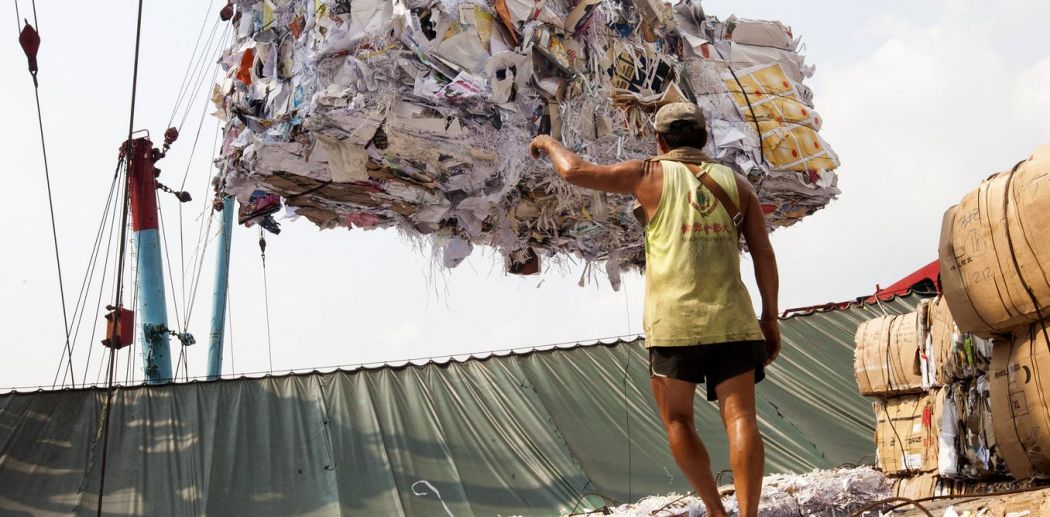By Doug Woodring
Global awareness of the scourge of plastic products in their “afterlife” is finally reaching the popular press and communities around the world in a big way.
The United Nations Environment Programme estimates that roughly 8 million tons of plastic enters the ocean each year from our consumption on land, and Asia is one of the main areas of pollution, due to high populations, big rains (which can carry trash from cities to rivers and the ocean), and poor waste management.
Plastic is virtually impossible to avoid in many uses, and it is needed across an enormous spectrum of our lives and technologies, from food preservation, to medicines, and light-weight, easily moulded products.
It is the traits that make it so useful, however, that also cause its environmental downfall when not recovered for recycling or properly managed as waste.

There are technically over 40,000 types of plastic, in seven basic “families” of polymers, but it is this wide variety, colour variation, light weight, and extreme durability, which means that when products are lost to the environment, they can cause damage for decades to come, because they simply don’t go away, and in fact, there is no “away.”
In this age of growing environmental awareness, and particularly with Hong Kong’s ongoing and increasing waste issues, the continued use of single-use plastic tells a lot about businesses, the level of awareness, and care for, the communities they serve.
On a daily basis, more people are impacted by trash and dirty water than by climate change. This does not mean that one problem is bigger than the other, but plastic pollution is certainly one of the more complicated issues to solve due to its widespread influence and dispersion.
Dirty water from trash impacts drinking water, hygiene, disease, tourism, and air pollution. It also impacts fishing, agriculture, maritime transport, the habitat of animals on land and water, and the carrying of toxicity in broken-up micro plastic into our food chain.
There are some easy solutions to reducing some of the blatant wastage caused by single use plastic, with the ability to minimize the environmental damage it causes. This can be done by simply not using the plastic products which have clear alternatives, or are not necessary.
Among others, this would include straws, stirrers, utensils, food service items and plastic bags on single drinks, which McDonald’s continues to serve, against the trend of governments in the region to tax or ban plastic bags.

The “excuses” for using these items in the past included cost, convenience, “customer service,” and hygiene protection. These rationales for use should no longer be justifications for continuing to transfer the costs associated with trash and ecosystem impacts to society, as there are many alternatives.
Yes we live in a busy city, and people are on the move, but the use of single-use plastic by businesses reflects their lack of awareness, leadership, procurement practices, and care for the communities they serve.
We know these products are now avoidable, but with Hong Kong being a “free market,” it is not likely that legislation will be strong, effective or broad enough in scope to limit or abolish the use of these materials.
Instead, we sadly still see high end restaurants, and even top five star hotels, still using plastic straws and swizzle sticks, except for the Peninsula Group, which should be complimented for leading the way in banning the use of these items globally, just this month.
Switching to alternatives might not save the world but the use of single-use plastics sends a distinct message to customers that the brand, restaurant or bar, and its management, are not “on top of” local and global trends issues. It shows that their procurement is not thoughtful, and that they do not care enough for the communities they serve to make simple changes.

The quest for a tiny percentage of extra margin, when using the excuse that the cost of alternatives is a factor, defines the reputation of that leadership and operation, and is not likely worth the bad-branding they are creating for themselves by continuing to sidestep a growing trend of reducing flagrant and unnecessary waste creation.
Today, the “reflex” from staff, whether at a local dai pai dong, or a five-star hotel, seems to be one of supplying plastic as part of the customer service. This is witnessed by how hard it is to try to get a drink, even of iced water, without a straw in it, or in the case of McDonald’s and other takeout operations, without a plastic bag on a single drink in a cup.
If hygiene is a concern that necessitates straw use, what about the hands that touch the straw before it is placed in the drink? Sadly, laziness and convenience seem to have an inverse relationship with pride, both at the business and consumer levels.
Without legislation to ban this unnecessary waste burden, we have to hope for a renewed sense of pride by restaurateurs and consumers, or somehow to convey a sense of guilt or “shame” towards our peers, similar to that used in the series “Game of Thrones.”
Awareness, thoughtful procurement, and care for the city we live in, might turn us into a city of pride, where the community reacts to the sight and touch of single-use plastic and unnecessary packaging as if they were apt to catch a contagious disease.
In many ways, single-use plastic and packaging is a disease, and it has slowly been absorbed into our daily lives without us realizing it over the past 20 years. Robust legislation restricting its use is an absolute necessity, along with more self-awareness in society, in order to stop the continued proliferation of single-use materials that simply do not go away.
Doug Woodring is Founder/Managing Director of Ocean Recovery Alliance
